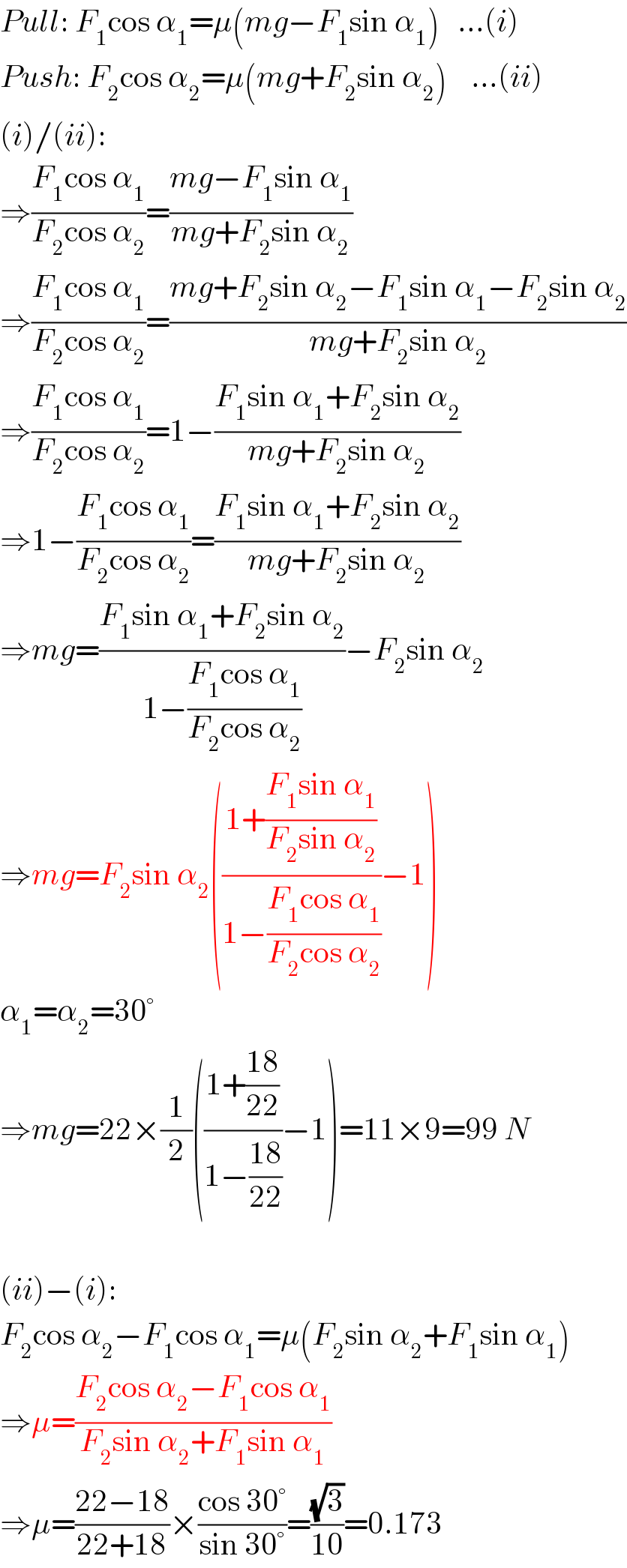
Question and Answers Forum
Question Number 27128 by NECx last updated on 02/Jan/18

Answered by mrW1 last updated on 02/Jan/18

Commented by NECx last updated on 02/Jan/18

Commented by mrW1 last updated on 02/Jan/18

Commented by NECx last updated on 02/Jan/18

